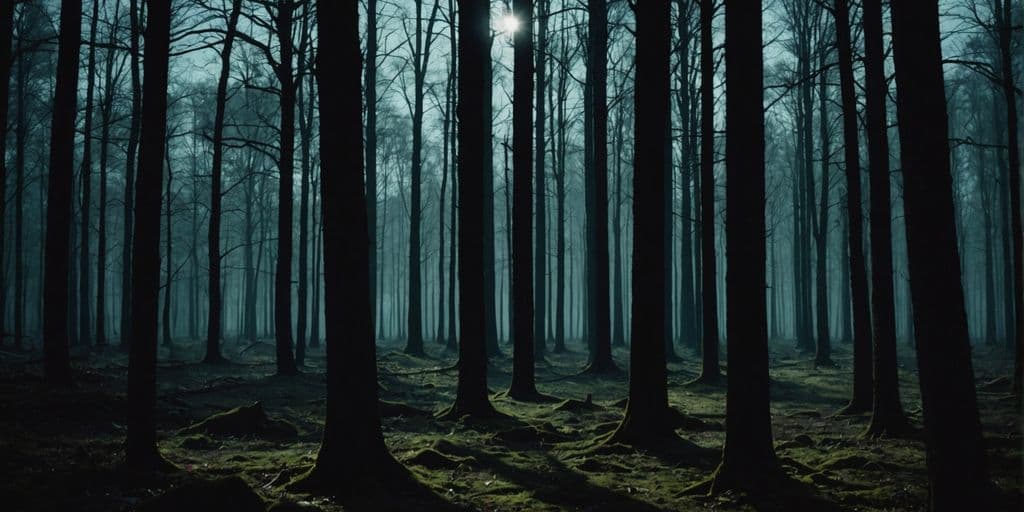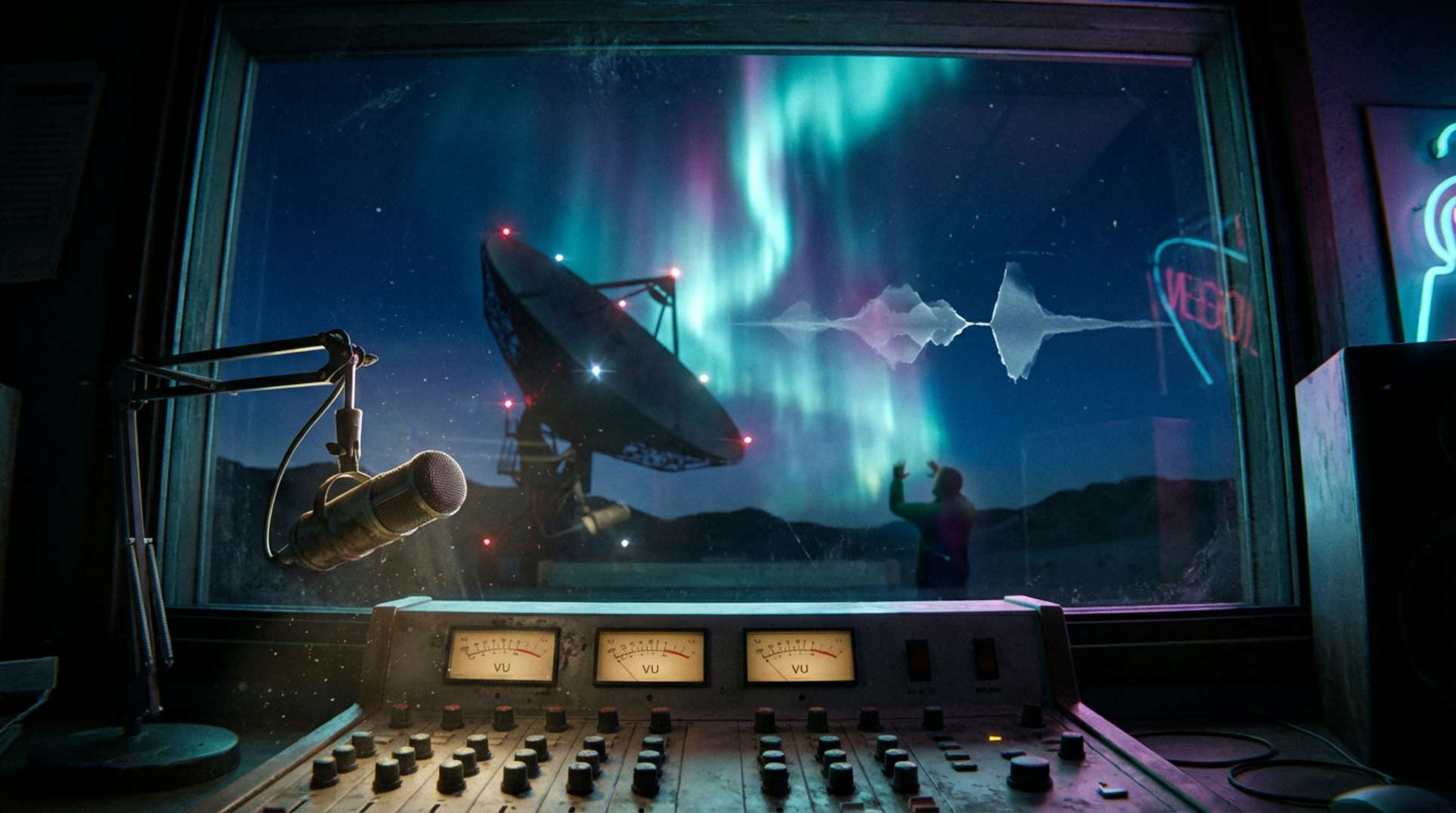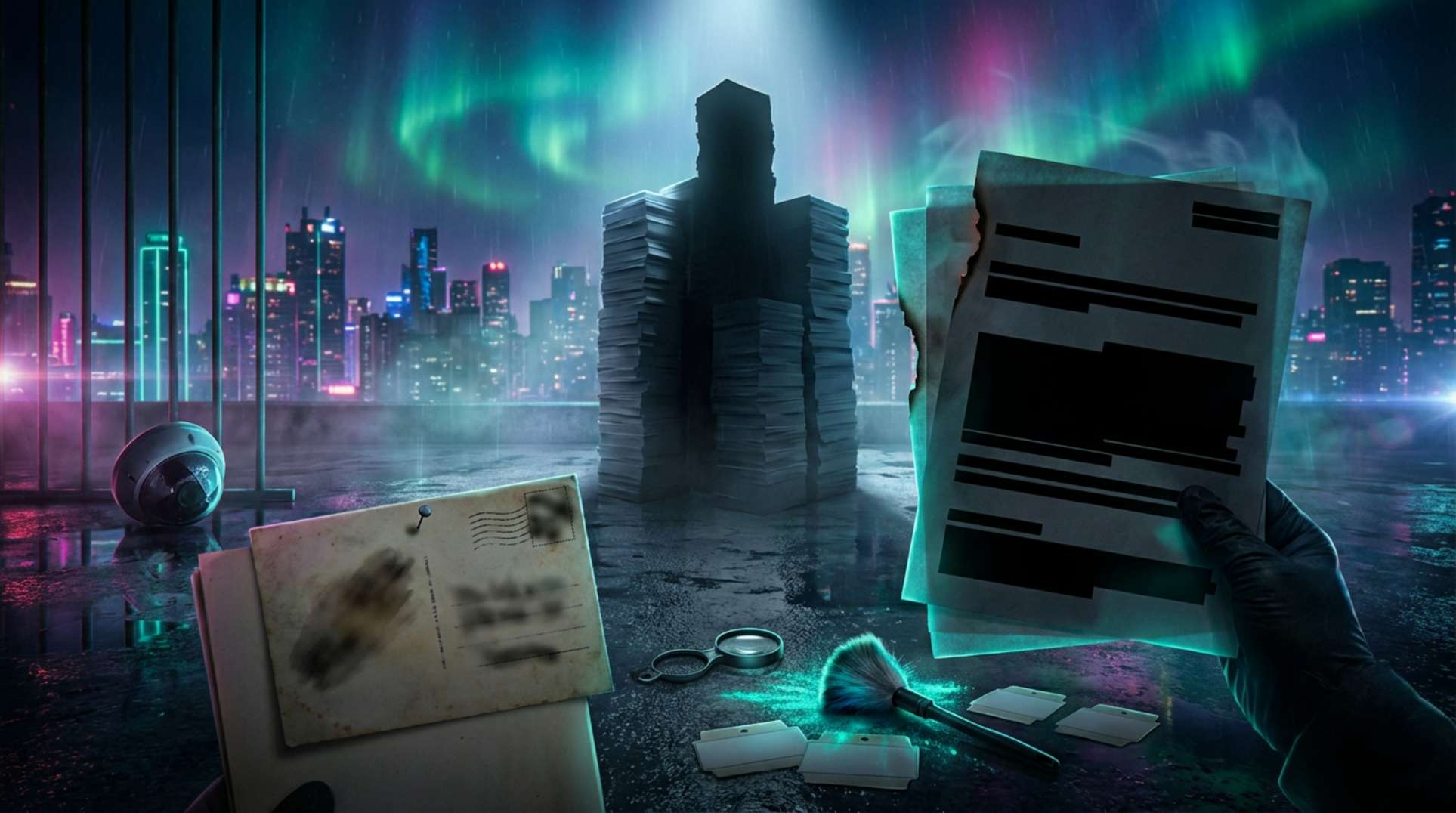The world of the occult is filled with mystery and fear. From ancient rituals to modern-day practices, the dark side of witchcraft has always fascinated and terrified us. This article delves into the historical roots, famous figures, rituals, cultural impact, and real-life crimes associated with the occult. We’ll explore true stories that reveal the sinister side of these practices and their influence on society.
Key Takeaways
- Witchcraft has deep historical roots, from ancient pagan rituals to medieval witch hunts and the infamous Inquisition trials.
- Famous figures like Aleister Crowley, Anton LaVey, and Gerald Gardner have significantly influenced modern occult practices.
- Occult rituals vary widely, including black magic, white magic, and controversial practices like satanic ritual abuse.
- The occult has had a lasting impact on culture, influencing literature, film, music, and modern media.
- Real-life crimes and murders linked to the occult often involve complex psychological profiles and have significant legal implications.
Historical Roots of Witchcraft
Ancient Pagan Practices
Witchcraft has deep roots in ancient pagan practices. In Europe, belief in witchcraft traces back to classical antiquity. These early practices often involved rituals to honor nature and the gods. People used herbs, chants, and symbols to invoke protection or bring about desired outcomes. These rituals were a way to connect with the spiritual world and seek guidance or favor from higher powers.
Medieval Witch Hunts
During the medieval period, fear of witchcraft grew, leading to widespread witch hunts. Accused witches were usually women who were believed to have made pacts with the devil. This period saw the rise of the infamous witch trials, where many were tortured and executed based on flimsy evidence. The hysteria was fueled by a mix of superstition, religious fervor, and social tensions.
The Inquisition and Witch Trials
The Inquisition played a significant role in the persecution of alleged witches. The Church sought to root out heresy and viewed witchcraft as a severe threat to Christian doctrine. Trials were often brutal, with the accused subjected to severe torture to extract confessions. The infamous Malleus Maleficarum, a guidebook for identifying and prosecuting witches, was widely used during this time. The witch trials left a dark legacy of fear and injustice that still echoes today.
The witch hunts and trials were a tragic chapter in history, marked by fear, superstition, and the persecution of countless innocent people. The echoes of these events remind us of the dangers of mass hysteria and the importance of justice and reason.
Famous Occult Figures
Aleister Crowley, often dubbed the "Great Beast 666," was a pivotal figure in the world of occultism. His works and practices have left a lasting impact on modern esoteric traditions. Crowley’s philosophy, known as Thelema, emphasized the pursuit of one’s true will. His influence extended beyond the occult, touching literature, music, and even pop culture.
Anton LaVey founded the Church of Satan in 1966, bringing a new dimension to modern occultism. LaVey’s Satanic Bible laid the foundation for LaVeyan Satanism, which focuses on individualism, self-indulgence, and skepticism of traditional religious beliefs. The Church of Satan has since become a prominent organization, often misunderstood and sensationalized by the media.
Gerald Gardner is credited with founding modern Wicca, a contemporary pagan religious movement. Gardner’s writings and rituals helped shape Wicca into a recognized spiritual path. His work drew from ancient pagan practices and folklore, creating a framework for modern practitioners. Gardner’s influence is evident in the widespread acceptance and practice of Wicca today.
Rituals and Ceremonies
Black magic rituals are often associated with invoking dark forces to achieve personal gain or harm others. These rituals can include the use of magical words or gestures, and sometimes even involve sacrifices. Practitioners believe they can control supernatural forces to bring about desired outcomes, but these practices are often shrouded in secrecy and fear.
White magic focuses on healing and positive outcomes. It involves rituals that aim to bring about good health, protection, and well-being. Practitioners of white magic often use herbs, crystals, and other natural elements in their ceremonies. They believe in harnessing the power of nature to honor and heal.
Satanic ritual abuse refers to the alleged abuse of individuals, often children, in the context of satanic rituals. These claims often involve stories of physical and psychological torture, and sometimes even murder. While many of these stories have been debunked, the fear and hysteria surrounding them have had a lasting impact on society.
Rituals and ceremonies in the occult can range from benign healing practices to dark and dangerous rites. Understanding the differences is crucial for separating myth from reality.
Cultural Impact of the Occult
The occult has left a significant mark on various aspects of culture, from literature and film to music and modern media. This influence is often subtle but pervasive, shaping how we perceive and engage with the world around us. The occult is of special interest now when religion is so much a part of our national dialogue.
Occult Crimes and Murders
Occult crimes and murders have long fascinated and horrified the public. These crimes often involve ritualistic elements and are sometimes linked to satanic or occult practices. The dark allure of the occult can lead individuals down a path of violence and crime, often with tragic outcomes.
Demonic Possession and Exorcism
Demonic possession is a terrifying phenomenon where individuals believe they are controlled by malevolent spirits. Exorcism is the ritual performed to expel these entities. The practice has deep roots in various cultures and religions, often involving complex ceremonies and prayers.
Historical Accounts
Throughout history, there have been numerous accounts of demonic possession. Ancient texts and religious scriptures often describe individuals exhibiting unusual behaviors, believed to be caused by evil spirits. These historical records provide a glimpse into how different cultures understood and dealt with possession.
Modern Cases
In contemporary times, cases of demonic possession continue to be reported. These instances often gain media attention, sparking debates between skeptics and believers. Modern exorcisms are sometimes performed by trained clergy, following strict protocols to ensure the safety of all involved.
The Role of the Church
The Church has always played a significant role in addressing demonic possession. Specially trained priests, known as exorcists, are appointed to perform exorcisms. The Church’s approach combines spiritual and psychological support, aiming to provide relief to those afflicted by what they believe to be evil forces.
The key signs of diabolic possession differ from those of oppression, highlighting the importance of proper diagnosis and treatment. Dabbling in the occult is often cited as a doorway to such malevolent influences.
Occult Symbols and Their Meanings
Pentagrams and Hexagrams
The pentagram is a five-pointed star that has been used throughout history as a symbol, often in magic or the occult. Its meaning has varied wildly over time, and it has functioned as a symbol of protection, a representation of the human body, and even a sign of the devil. The hexagram, a six-pointed star, is another powerful symbol often associated with alchemy and the Kabbalah.
Runes and Sigils
Runes are ancient alphabets used in Germanic languages before the adoption of the Latin alphabet. Each rune has its own meaning and magical properties. Sigils, on the other hand, are symbols created for a specific magical purpose. They are often used in modern magical practices to focus intent and manifest desires.
Animal Symbolism
Animals have always played a significant role in the occult. For example, the owl is often seen as a symbol of wisdom and hidden knowledge, while the snake can represent both danger and transformation. These symbols are used in various rituals and spells to harness the qualities they represent.
Secret Societies and the Occult
The Freemasons are one of the most well-known secret societies in the world. Their origins date back to the late 16th century. Freemasonry is often shrouded in mystery, with many of its rituals and symbols kept hidden from the public. Members are known to use secret handshakes and codes to identify each other. The society is structured in a hierarchical manner, with different degrees of membership.
The Illuminati is another secret society that has captured the public’s imagination. Founded in 1776, this group aimed to promote Enlightenment ideals and combat religious and political oppression. Over time, the Illuminati became the subject of numerous conspiracy theories, often being blamed for controlling world events from behind the scenes. Despite the lack of concrete evidence, the idea of a powerful, hidden group manipulating global affairs continues to fascinate many.
The Hermetic Order of the Golden Dawn was established in the late 19th century and focused on the study and practice of the occult, metaphysics, and paranormal activities. Members of the Golden Dawn engaged in elaborate rituals and ceremonies designed to invoke spiritual and magical powers. The society had a significant influence on modern occultism, with many of its practices and teachings still being used today.
Secret societies like these often operate in the shadows, their activities and memberships concealed from the public eye. This secrecy fuels curiosity and speculation, making them a subject of endless fascination and intrigue.
The Occult and Modern Science
Alchemy and Chemistry
Alchemy, often seen as the precursor to modern chemistry, was a blend of mystical beliefs and early scientific practices. Alchemists aimed to transform base metals into gold and discover the elixir of life. While their goals were not achieved, their experiments laid the groundwork for modern chemistry. They developed early laboratory techniques and equipment, which are still in use today.
Astrology and Astronomy
Astrology and astronomy were once intertwined, both seeking to understand the cosmos. Astrology, the study of celestial bodies’ influence on human affairs, was considered a serious science. However, as astronomy evolved, it focused on the physical properties and movements of celestial objects, leaving astrology behind as a pseudoscience. Despite this, astrology remains popular in many cultures.
Parapsychology
Parapsychology explores phenomena like telepathy, clairvoyance, and psychokinesis, which are not explained by conventional science. While mainstream science often dismisses these studies, parapsychologists use scientific methods to investigate these occurrences. The field remains controversial, with ongoing debates about the validity of its findings.
The intersection of the occult and science reveals how human curiosity drives us to explore the unknown, blending mystical beliefs with empirical investigation.
The Role of Women in Witchcraft
Throughout history, women have often been the primary targets of witch hunts and trials. The women targeted were typically marginalized women such as spinsters, widows, or those without a male protector. Many of the accused, while not convicted, faced severe social stigma and isolation. These witch trials were a means to control and suppress women who did not conform to societal norms.
In recent years, there has been a resurgence of interest in witchcraft, with many women embracing it as a form of empowerment. Modern witchcraft movements, such as Wicca, celebrate the feminine divine and encourage women to connect with their inner strength and intuition. This shift has allowed women to reclaim their power and find a sense of community and belonging.
The intersection of feminism and the occult has become increasingly prominent. Many feminists view witchcraft as a way to challenge patriarchal structures and promote gender equality. By embracing the occult, women can explore alternative spiritual practices and rituals that honor their experiences and perspectives. This connection between feminism and the occult has led to a growing number of women finding solace and empowerment in these practices.
The Occult in Different Cultures
The occult has a rich and varied history across different cultures, each with its own unique practices and beliefs. Witchcraft and sorcery are found in many societies, often with a mix of good and bad elements. Let’s explore how the occult manifests in three distinct cultural traditions.
Conclusion
In exploring the dark side of the occult, we have delved into a world filled with mystery, fear, and fascination. From ancient rituals to modern-day practices, the stories of witchcraft and rituals reveal a complex tapestry of human belief and behavior. While some see the occult as a path to hidden knowledge and power, others view it as a dangerous descent into darkness. These true stories remind us that the line between good and evil is often blurred, and the allure of the unknown can lead to both enlightenment and peril. As we close this chapter, we are left to ponder the true nature of the occult and its place in our world. Whether as a warning or a curiosity, the dark side of the occult continues to captivate and challenge our understanding of the human experience.
Frequently Asked Questions
What is the history of witchcraft?
Witchcraft has roots in ancient pagan practices, medieval witch hunts, and the Inquisition. It has evolved over centuries and varies across cultures.
Who are some famous figures in the occult?
Notable figures include Aleister Crowley, Anton LaVey, and Gerald Gardner. Each has significantly influenced modern occult practices.
What are the different types of rituals in the occult?
Occult rituals can be categorized into black magic, white magic, and satanic rituals. Each type has its own purposes and practices.
How has the occult influenced modern culture?
The occult has impacted literature, film, music, and media, shaping various aspects of popular culture and artistic expression.
Are there any real-life crimes associated with the occult?
Yes, there have been infamous cases where crimes were linked to occult practices. These incidents often involve complex psychological and legal issues.
What is demonic possession and how is it treated?
Demonic possession is believed to be an evil spirit taking control of a person. Exorcisms, often performed by religious figures, are the traditional treatment.
What do common occult symbols mean?
Symbols like pentagrams, hexagrams, runes, and sigils each have specific meanings and are used in various occult practices for different purposes.
How do secret societies relate to the occult?
Secret societies like the Freemasons, the Illuminati, and the Golden Dawn have historical ties to occult practices and beliefs.




